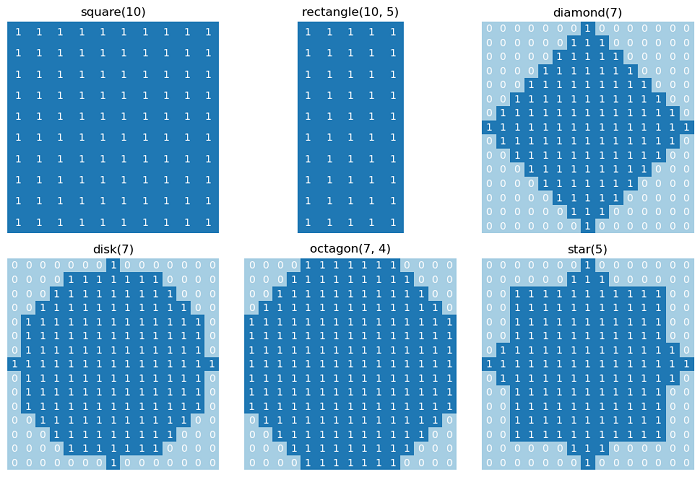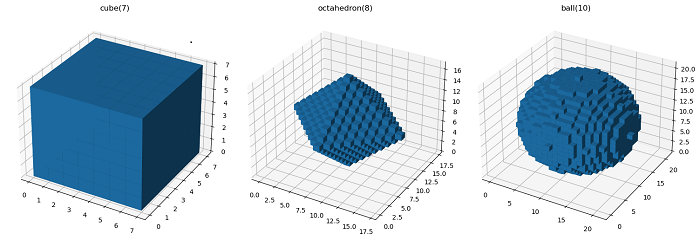
- Scikit Image – Introduction
- Scikit Image - Image Processing
- Scikit Image - Numpy Images
- Scikit Image - Image datatypes
- Scikit Image - Using Plugins
- Scikit Image - Image Handlings
- Scikit Image - Reading Images
- Scikit Image - Writing Images
- Scikit Image - Displaying Images
- Scikit Image - Image Collections
- Scikit Image - Image Stack
- Scikit Image - Multi Image
- Scikit Image - Data Visualization
- Scikit Image - Using Matplotlib
- Scikit Image - Using Ploty
- Scikit Image - Using Mayavi
- Scikit Image - Using Napari
- Scikit Image - Color Manipulation
- Scikit Image - Alpha Channel
- Scikit Image - Conversion b/w Color & Gray Values
- Scikit Image - Conversion b/w RGB & HSV
- Scikit Image - Conversion to CIE-LAB Color Space
- Scikit Image - Conversion from CIE-LAB Color Space
- Scikit Image - Conversion to luv Color Space
- Scikit Image - Conversion from luv Color Space
- Scikit Image - Image Inversion
- Scikit Image - Painting Images with Labels
- Scikit Image - Contrast & Exposure
- Scikit Image - Contrast
- Scikit Image - Contrast enhancement
- Scikit Image - Exposure
- Scikit Image - Histogram Matching
- Scikit Image - Histogram Equalization
- Scikit Image - Local Histogram Equalization
- Scikit Image - Tinting gray-scale images
- Scikit Image - Image Transformation
- Scikit Image - Scaling an image
- Scikit Image - Rotating an Image
- Scikit Image - Warping an Image
- Scikit Image - Affine Transform
- Scikit Image - Piecewise Affine Transform
- Scikit Image - ProjectiveTransform
- Scikit Image - EuclideanTransform
- Scikit Image - Radon Transform
- Scikit Image - Line Hough Transform
- Scikit Image - Probabilistic Hough Transform
- Scikit Image - Circular Hough Transforms
- Scikit Image - Elliptical Hough Transforms
- Scikit Image - Polynomial Transform
- Scikit Image - Image Pyramids
- Scikit Image - Pyramid Gaussian Transform
- Scikit Image - Pyramid Laplacian Transform
- Scikit Image - Swirl Transform
- Scikit Image - Morphological Operations
- Scikit Image - Erosion
- Scikit Image - Dilation
- Scikit Image - Black & White Tophat Morphologies
- Scikit Image - Convex Hull
- Scikit Image - Generating footprints
- Scikit Image - Isotopic Dilation & Erosion
- Scikit Image - Isotopic Closing & Opening of an Image
- Scikit Image - Skelitonizing an Image
- Scikit Image - Morphological Thinning
- Scikit Image - Masking an image
- Scikit Image - Area Closing & Opening of an Image
- Scikit Image - Diameter Closing & Opening of an Image
- Scikit Image - Morphological reconstruction of an Image
- Scikit Image - Finding local Maxima
- Scikit Image - Finding local Minima
- Scikit Image - Removing Small Holes from an Image
- Scikit Image - Removing Small Objects from an Image
- Scikit Image - Filters
- Scikit Image - Image Filters
- Scikit Image - Median Filter
- Scikit Image - Mean Filters
- Scikit Image - Morphological gray-level Filters
- Scikit Image - Gabor Filter
- Scikit Image - Gaussian Filter
- Scikit Image - Butterworth Filter
- Scikit Image - Frangi Filter
- Scikit Image - Hessian Filter
- Scikit Image - Meijering Neuriteness Filter
- Scikit Image - Sato Filter
- Scikit Image - Sobel Filter
- Scikit Image - Farid Filter
- Scikit Image - Scharr Filter
- Scikit Image - Unsharp Mask Filter
- Scikit Image - Roberts Cross Operator
- Scikit Image - Lapalace Operator
- Scikit Image - Window Functions With Images
- Scikit Image - Thresholding
- Scikit Image - Applying Threshold
- Scikit Image - Otsu Thresholding
- Scikit Image - Local thresholding
- Scikit Image - Hysteresis Thresholding
- Scikit Image - Li thresholding
- Scikit Image - Multi-Otsu Thresholding
- Scikit Image - Niblack and Sauvola Thresholding
- Scikit Image - Restoring Images
- Scikit Image - Rolling-ball Algorithm
- Scikit Image - Denoising an Image
- Scikit Image - Wavelet Denoising
- Scikit Image - Non-local means denoising for preserving textures
- Scikit Image - Calibrating Denoisers Using J-Invariance
- Scikit Image - Total Variation Denoising
- Scikit Image - Shift-invariant wavelet denoising
- Scikit Image - Image Deconvolution
- Scikit Image - Richardson-Lucy Deconvolution
- Scikit Image - Recover the original from a wrapped phase image
- Scikit Image - Image Inpainting
- Scikit Image - Registering Images
- Scikit Image - Image Registration
- Scikit Image - Masked Normalized Cross-Correlation
- Scikit Image - Registration using optical flow
- Scikit Image - Assemble images with simple image stitching
- Scikit Image - Registration using Polar and Log-Polar
- Scikit Image - Feature Detection
- Scikit Image - Dense DAISY Feature Description
- Scikit Image - Histogram of Oriented Gradients
- Scikit Image - Template Matching
- Scikit Image - CENSURE Feature Detector
- Scikit Image - BRIEF Binary Descriptor
- Scikit Image - SIFT Feature Detector and Descriptor Extractor
- Scikit Image - GLCM Texture Features
- Scikit Image - Shape Index
- Scikit Image - Sliding Window Histogram
- Scikit Image - Finding Contour
- Scikit Image - Texture Classification Using Local Binary Pattern
- Scikit Image - Texture Classification Using Multi-Block Local Binary Pattern
- Scikit Image - Active Contour Model
- Scikit Image - Canny Edge Detection
- Scikit Image - Marching Cubes
- Scikit Image - Foerstner Corner Detection
- Scikit Image - Harris Corner Detection
- Scikit Image - Extracting FAST Corners
- Scikit Image - Shi-Tomasi Corner Detection
- Scikit Image - Haar Like Feature Detection
- Scikit Image - Haar Feature detection of coordinates
- Scikit Image - Hessian matrix
- Scikit Image - ORB feature Detection
- Scikit Image - Additional Concepts
- Scikit Image - Render text onto an image
- Scikit Image - Face detection using a cascade classifier
- Scikit Image - Face classification using Haar-like feature descriptor
- Scikit Image - Visual image comparison
- Scikit Image - Exploring Region Properties With Pandas
Scikit Image - Generating Footprints
Footprint, often referred to as a structuring element, is a small matrix or shape mask used in basic morphological image processing operations. It defines the neighborhood of pixels around a central pixel during the processing of each pixel in the input image.
Generating footprints refers to the creation of matrices (known as structuring elements) of different shapes including 2D shape and 3D shapes. In scikit-image (skimage), you can generate footprints for morphological operations using various methods provided by the skimage.morphology module.
Creating 2D structuring elements
To create 2D(flat) structuring elements like disk, square, rectangle, diamond, octagon, and star can be possible using the following functions from the skimage.morphology module. Lets see is the synxat of the each function below:
Disk-shaped Footprint
To create a disk(circular) shaped structuring element, the disk() function can be used.
SyntaxFollowing is the syntax −
skimage.morphology.disk(radius, dtype=<class 'numpy.uint8'>, *, strict_radius=True, decomposition=None)
Diamond-shaped Footprint
The function diamond() generates the diamond-shaped structuring element.
SyntaxFollowing is the syntax −
skimage.morphology.diamond(radius, dtype=<class 'numpy.uint8'>, *, decomposition=None)
Octagon-shaped Footprint
The function octagon() generates an octagon-shaped footprint.
SyntaxFollowing is the syntax −
skimage.morphology.octagon(m, n, dtype=<class 'numpy.uint8'>, *, decomposition=None)
Rectangle-shaped Footprint
The rectangle() function allows you to create a rectangular-shaped structuring element with specified dimensions.
SyntaxFollowing is the syntax −
skimage.morphology.rectangle(nrows, ncols, dtype=<class 'numpy.uint8'>, *, decomposition=None)
Square-shaped Footprint
Generating a square-shaped structuring element can be possible by using the square() function.
SyntaxFollowing is the syntax −
skimage.morphology.square(width, dtype=<class 'numpy.uint8'>, *, decomposition=None)
Star-shaped Footprint
The start-shaped footprints are generated by using the star() function.
SyntaxFollowing is the syntax −
skimage.morphology.star(a, dtype=<class 'numpy.uint8'>)
Example
This example demonstrates the use of functions from the skimage.morphology library to create flat (2D) footprints. Each plot is labeled with the corresponding function used to generate the structuring element.
import matplotlib.pyplot as plt
from skimage.morphology import (square, rectangle, diamond, disk, octagon, star)
# Generate 2D structuring elements.
struc_2d = {
"square(10)": square(10),
"rectangle(10, 5)": rectangle(10, 5),
"diamond(7)": diamond(7),
"disk(7)": disk(7),
"octagon(7, 4)": octagon(7, 4),
"star(5)": star(5)
}
# Visualize the elements.
fig = plt.figure(figsize=(10, 10))
idx = 1
for title, struc in struc_2d.items():
ax = fig.add_subplot(3, 3, idx)
ax.imshow(struc, cmap="Paired", vmin=0, vmax=12)
for i in range(struc.shape[0]):
for j in range(struc.shape[1]):
ax.text(j, i, struc[i, j], ha="center", va="center", color="w")
ax.set_axis_off()
ax.set_title(title)
idx += 1
fig.tight_layout()
plt.show()
Output
On executing the above program, you will get the following output −

Creating 3D structuring elements
To generate 3D structuring elements, such as cube, octahedron, and ball, you can utilize the provided functions within the skimage.morphology module. The syntax for each function is discussed below:
Ball-shaped Footprint
To create a ball-shaped(the 3D equivalent of a disk) structuring element you can use the ball() function.
SyntaxFollowing is the syntax −
skimage.morphology.ball(radius, dtype=<class 'numpy.uint8'>, *, strict_radius=True, decomposition=None)
Cube-shaped Footprint
To create a cube-shaped(the 3D equivalent of a square) structuring element, you can use the cube() function from the skimage.morphology module.
SyntaxFollowing is the syntax −
skimage.morphology.cube(width, dtype=<class 'numpy.uint8'>, *, decomposition=None)
Octahedron-shaped Footprint
Creating an octahedron-shaped (the 3D equivalent of a diamond) structuring element can be possible by using the octahedron() function.
SyntaxFollowing is the syntax −
skimage.morphology.octahedron(radius, dtype=<class 'numpy.uint8'>, *, decomposition=None)
Example
This example demonstrates the use of functions from the skimage.morphology library to create 3D footprints. Each plot is labeled with the corresponding function used to generate the structuring element.
import matplotlib.pyplot as plt
from mpl_toolkits.mplot3d import Axes3D
from skimage.morphology import (cube, octahedron, ball)
# Generate 3D structuring elements.
struc_3d = {
"cube(7)": cube(7),
"octahedron(8)": octahedron(8),
"ball(10)": ball(10)
}
# Visualize the elements.
fig = plt.figure(figsize=(15, 15))
idx = 1
for title, struc in struc_3d.items():
ax = fig.add_subplot(3, 3, idx, projection=Axes3D.name)
ax.voxels(struc)
ax.set_title(title)
idx += 1
fig.tight_layout()
plt.show()
Output
On executing the above program, you will get the following output −
